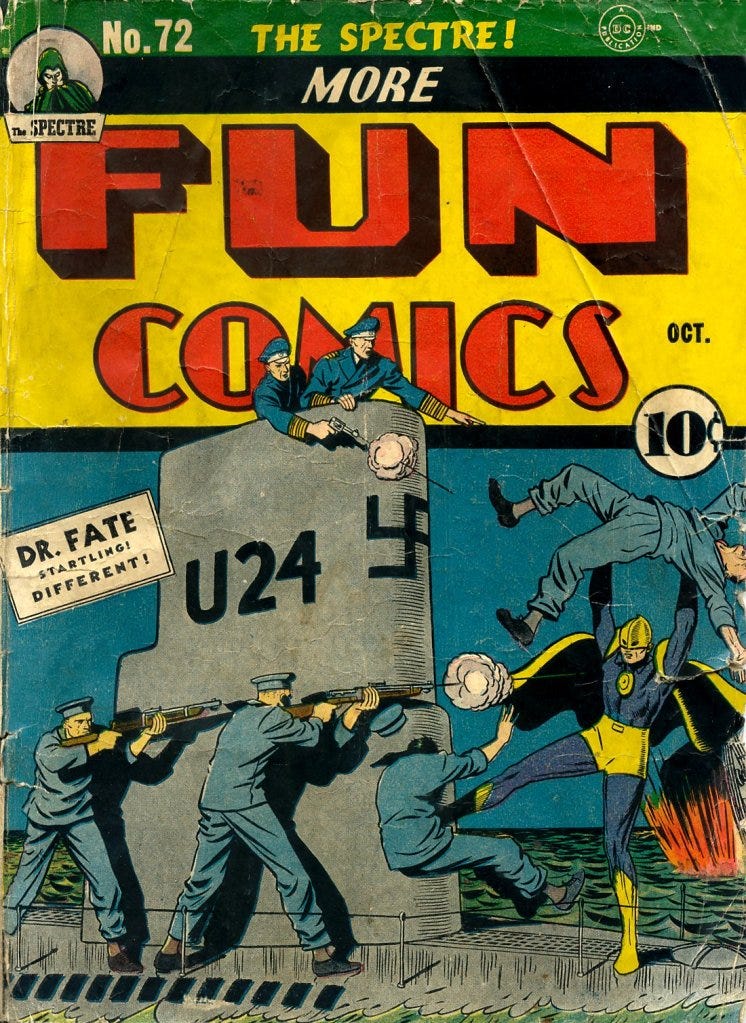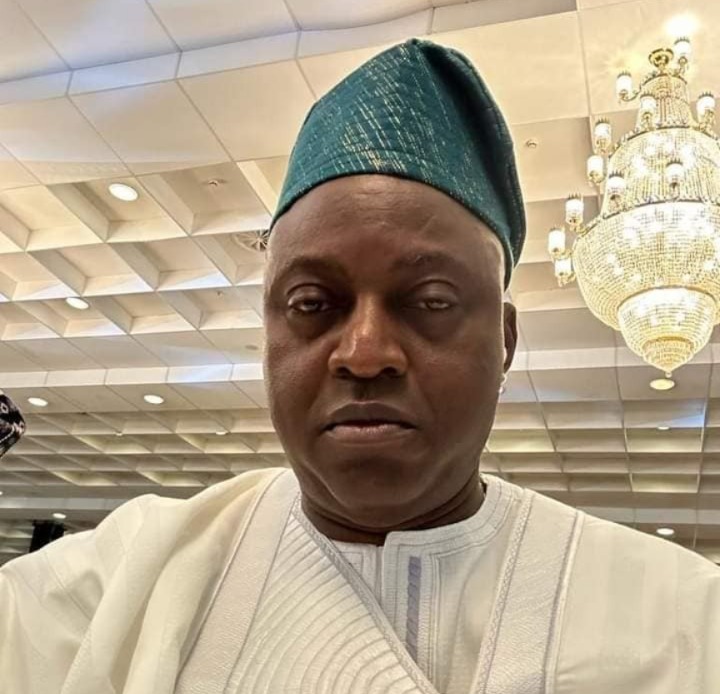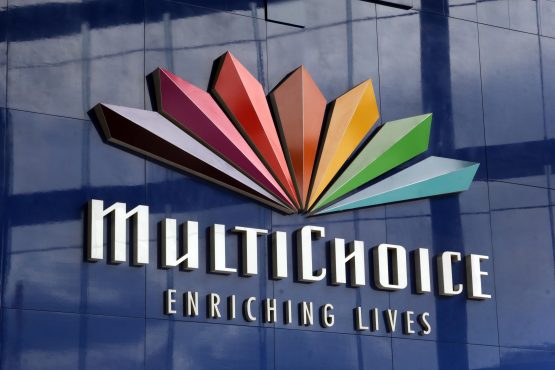#171: Big Jim - by Tom Brevoort - Man With A Hat
The big news story this week was the passing of former editor in chief , who was lost to esophageal cancer. This wasn’t an entirely unexpected development for those of us in the know, as had been battling the disease for some time, and had previously had a couple of close calls. One only needed to look at any of the recent photographs of him taken in his many convention appearances to see just how poorly he was looking as compared to only a year earlier. Even so, sudden demise sent shock waves through the industry.
Pretty much everybody who eulogizes uses some version of the term “complicated” or “complex” to describe him. This is a polite way of saying that was instrumental in achieving a lot of good things for the comic book industry, but also had a number of serious flaws that led to his downfall time and time again. Nobody wants to recount any of failings as we speak of his death, but neither do those who were in his orbit want to paint a picture of the man as a sainted figure. Hence, “complicated.”
What I can tell you for certain is this; was a phenomenally talented man and a child wunderkind who broke into the industry at 13 years old by submitting stories to editor , one of the most tyrannical editors in the history of comics. didn’t realize age until after he’d bought a number of his stories, and he was a bit chagrinned at the realization. age, however, didn’t prevent from belittling and mistreating him, as he did al of his creators, and I suspect this had a real impact on psyche. But in addition to dressing him down, also educated , instructing him in how comics worked as a medium and as a business, and giving him the tools that he’d use for the rest of his career. would, in my opinion, become a bit too dogmatic and inflexible in his thinking as time went on, but it must be said that he nurtured and instructed a huge amount of talent throughout his time in the industry. He genuinely wanted to pass on the lessons that he had learned to the next generation and beyond.
I only had one or two short interactions with myself, having come into about two years after he had been shown the door. So my firsthand experience here is limited. But his ghost permeated all throughout the Editorial department at that time, and those who had lived through his tenure universally shared stories about how difficult, demanding and mercurial he could be as a boss. I’d never seen the color drain from a person’s face in the manner of a Casper the Friendly Ghost cartoon until was told that was coming back to write a project for me around 2001. It was as though somebody had stepped on her grave.
That project wound up not happening, despite my best efforts, for reasons that had honed into a “tight five” over the years as part of his convention reminiscences. I unsurprisingly don’t really agree with version of events, and he would no doubt not agree with mine, so the truth lies someplace in-between. But this is not the time to tell that story. To my mind, put it best in his eulogy to when he said, Which is a fancy way of saying that never told any story in which he wasn’t the absolute hero.
Years later, I almost had him convinced to do a one-page story for , the big anniversary book. He was intending to write a Doctor Doom page, and he wanted his fried to illustrate it. That would have been fun, but it turned out that he didn’t like the money that was being offered and so ultimately declined the assignment. By the time I found out about that, the deed had been done. Had I heard about it earlier, I would have offered to pay pretty much whatever he wanted out of my own pocket to get that one-pager to happen. But it never did.
made the Legion of Super Heroes into a fan favorite series, he brought a bit of a Stan Lee sensibility to staid in the 1960s. He created a bevy of memorable characters, heroes and villains alike, he advocated for better page rates and sales incentives for the creators who worked for him, he created the line-wide company crossover, he experimented with new formats and new markets, he provided opportunities for any number of young up-and-comers who went on to become superstars, he created the editorial structure that still uses today, making order out of chaos. He started from scratch and reinvented himself with new start-up companies not once, not twice, but three times. he clearly loved this medium and this industry, even though, like so many, he was a bit chewed up by the machinery of it. And he wrote an awful lot of memorable comic book stories that can still be read today. As a legacy goes, that isn’t that bad at all.
But now, back to the land of the living for all of the new correspondence that has come this way over the past week:
For the inability to keep young readers from the red band material, could a solution be a parental code? It isn’t ideal, but if you’re old enough to be making and paying for your own account you just set up a code that for the more R rated releases you put in.
Yes, there are probably ways in which this could be done, . But the thing is, they all require effort and they all make things more difficult for the widest portion of the audience while only serving a relatively small subset of that office. So up until now, it hasn’t really been a priority to figure out. Maybe that will change in the months to come—but also, maybe not.
I just read the new History of the DCU by Mark Waid - made me wonder do you enjoy this type of cataloguing/fitting it all together comic book histories? or a more free form 'oral history' type approach (details change over time, origins are updated, etc but the core story remains).
I read and liked it a lot, . And the format was very recognizable, as it’s almost exactly like the that and did with me a number of years ago (which itself was largely based on the that and put together after ) I suspect that this project was more difficult to put together than either of those two earlier ones simply because continuity has been rebooted and reshuffled so many times over the years—so much so that there’s an even money chance that everything will be different almost as soon as the last issue of this series comes out. But is the perfect person to tackle such a job, and he and his research team did a very nice job from what I could determine.
You mentioned DC's Solo project, where artists were given 48 pages and the entire DC universe to play with. If Marvel did a similar project, who might you consider?
Oh, I don’t know. Just sitting here thinking about it, , a few names come to mind; , , , —the list could go on and on.
before starting the Green Goblin series featuring Phil Urich, did you know that Norman would be coming back and reclaiming the mask, or were any changes made to accommodate this reveal?
The series had initially been put together by , , though I wound up inheriting it and sending even the first issue to print. And no, at that point, there wasn’t even a notion that Norman Osborn would ever be coming back, so that was a non-issue. The resurrection of Norman was a idea, his solution for how to end the unending Clone Saga meaningfully. That idea probably hastened the demise of the series, but not by any great span of time. Its sales were pretty lousy towards the end.
Let Peter and MJ get married
Did that already, . Then did it again in the Ultimate Universe.
1. I am LOVING Uncanny X-Men. The Southern Gothic vibes, the character work, the gorgeous art. Will Simone be staying on the title for a while? (I really, really hope so.)
2. I'm enjoying Phoenix as well, but we're starved for Jean and Scott content over here. Any hopes of them interacting more regularly soon? And please tell us you're not looking to break up the marriage! A decade and a half of that was more than enough to deal with.
Thanks, ! 1) Yes, assuming that she wants to, of course. 2) We just gave you a tiny taste of them interacting in last week, and there’s also coming up.
HULK/HUMAN TORCH Story: Yes, I was very excited to work on this project, mostly as a likely-never-gonna-happen-again chance to ink Steve Ditko. While inking it, I was surprised to realize how much of my own, personal art style had been (sub-consciously) influenced by Ditko! While I'd never consciously copied his work (although I'd certainly studied and admired it) time and again I'd work on a figure in this story and instantly "know" what Ditko was going for, or why he had chosen to do it in that way, because (it seemed to me, at least) he was making the same choices *I* would have made. I felt I had a much more natural fit with Ditko than many other pencilers I've worked with. A great honor, and a very satisfying assignment.
You DID send me Jack Harris's original dialogue! Unfortunately, the file is so old I can no longer open it. My memory is it was a lot like many fill-in issues from that time— not bad, but not really very engaging. I think I kept many of Jack's original names for the characters, and even his title for the story. I decided to have the issue narrated by Johnny because, well, Johnny's voice is fun to read! He could talk about going to the grocery store and it'd be entertaining. Although looking over my dialogue, I should have probably cut out at least 10% of it. Too many captions and balloons!
And I'll just add— as I told you after I finished the Ditko assignment— if you have a Sal Buscema story that needs finishing, I'm your man! Inking Sal is at the top of my professional bucket list.
Sadly, , I don’t have an uninked story anywhere in my files. But I’ll keep that in mind should anything turn up in the future.
Tom, did you take any perverse glee in Kaine-as-Scarlet Spider headlining the 2014 Chris Yost/Marcus To volume of New Warriors or did that fly under your radar?
That series happened on my watch, , so I was certainly aware of it. But I didn’t have anything particular to do with it in terms of making that element happen or anything.
It seems like there's an overwhelming number of stories that are arcs with potential cataclysmic results if the heroes don't win. As a reader this gets exhausting and numbing. If everything is a big deal, then nothing is, you know? I get that you need big events to draw and maintain sales, but is there ever any talk in editorial circles about adding more single issue, low-stakes tales to allow for better character development? Anecdotal reading of letters pages seems to reveal fans like those too (thinking of the ASM not too long ago that was just Peter and Shay on a date).
I think if you actually look at the output of our line as a whole, , you’ll find that we do a lot of what you’re talking about already. We do a great deal of stories that only run for a single issue or two parts rather than everything being a five-issue epic.
A recent article on a well known comics website missed out a comma so that the end result read as The Goddamned Spider-Man. While I think this is a great title it reminded me of the need to print a Doctor Strange: Damnation (Tarnation Variant). Are there any circumstances where you have had to censor others as an editor or self-censor because even though you would like to use a word or phrase it really wouldn't be the worth the hassle ?
Not really, . Part of that, no doubt, is that I came up in the days where it wasn’t allowable to even say DAMN or HELL in a comic. (and in fact, there was a memorable editorial retreat back around 1993 when the subject of loosening up our restrictions to permit such words was a topic for discussion, and the staff as a whole decided there wasn’t any good reason to do so.)
your recent X-Men Monday has some people reflecting on the one you did last year, and lamenting something that never materialized: The part where you said in six months that something would happen in the books that would 'have EVERYONE TALKING about ICEMAN'.
People were really excited for this. What happened? Was it something that just got significantly delayed and is still coming, or was it just abandoned entirely?
I think if you go back, , and look at what I actually said in that interview, rather than how people such as yourself chose to interpret it, you’ll find that I didn’t quite promise what you’re talking about. I definitely pointed to Iceman as a character who would be getting some play in the immediate future—as he did in .
I do take issue with one thing you said, which was that 'the reality is that it was a relationship that only came into play incredibly occasionally'. This may be true of the Marvel Universe as a whole (I don't know, I've only ever really read the X-books consistently), but it's certainly not true in the X-Men side of things. There are some very important stories for the X-Verse in which that familial relationship is crucial, including House of M and everything that came after it in the Decimation era, and it does touch the wider Marvel Universe in stories such as Children's Crusade. Echoes of it could be seen as recently as the Krakoan Age (the Trial of Magneto series) even though AXIS is way in the past now, and it seems to me that this is because it has resonance.
This is slightly funny to me, , because I edited just about every one of the stories that you just listed. So you really don’t need to tell me about them. But I’m very much a “play the ball where it lays” sort of a person when it comes to the continuity and history of the X-Men at the moment. So I don’t really love the notion of doing a story the whole point of which is to put the torch to some other old story. That doesn’t interest me. We’ve been able to do good stories concerning Magneto and Wanda and Pietro without an actual paternal relationship being present simply thanks to their long history. So to me, undoing this involves a lot of effort for really not much of a return.
A few weeks ago you said (paraphrasing here) that you liked certain comics because they presented optimism and hope in contrast to a real world where things can be quite bleak.
With X-Men comics of the last 25 years, here's a lot of brutality, genocides, the death of young mutants, of characters' family members in an increasingly frequent degree (Genosha, Terrigen Mists, Decimation, Fall of Krakoa, the various "cure" stories, the death of the Greys). Even before this century, the X-Men could be bleak. Did that ever put you off of X-Men and do you think that the overall frequency of these extinction level tragedies might deter readers?
I think that anything can deter readers if you do too much of it, . So the trick is always to provide balance. But living the lives of super heroes is never going to be easy for anybody who does it—and that’s why we read the stories, to experience those events viscerally and to see how the assorted characters are able to deal with their troubles. Rightly or wrongly, I don’t tend to think of the last year of X-Men books as being especially bleak. Certainly bleak things have happened in some of them, but also funny things happened, and sentimental things happened, and triumphant things happened, and silly things happened. It’s a broad spectrum. That’s what we try to achieve a panoply of experiences.
What was going through your head when Secret Empire hit the fan? Given your understanding that most of the drama was coming from “news orgs” and bloggers that weren’t even readers in the first place, were you unbothered? Hoping the free publicity would pull in new readers? I happened to love the event the whole way through, but I still see people disowning Secret Empire because “Captain America would never be a bad guy.” Yet the fact that there WAS a Captain America fighting with the good guys the whole time never seems to enter their equation. And the fact that Sam Wilson’s story in his own solo book at that time was that America was actively refusing to let a Black man take up the shield felt like a prescient irony that still holds up in hindsight.
Unbothered is maybe too strong of a term, , given that there were death threats deemed credible enough by law enforcement that I had to cancel at least one convention appearance during that time. But none of it really changed the trajectory of the story that was telling and which we’d worked out in broad strokes ahead of time.
Given your standing in the company, including hand-on work on the previous Marvel/DC collaborations--and the fact that Deadpool is largely within the X-remit--what was you involvement in the upcoming Deadpool/Batman, if any?
is being edited by editor , , which ought to make sense to you. As such, I have oversight on it, and gave some comments on it (as well as the book), but ultimately is the person actually doing the work there. At most, I kibbitzed a little bit.
All right, we’re on Week Two of this challenge, and we’re only slightly closer to there being a resolution. For all that this list of possible options for the Ten Marvel Masterworks that everybody can agree upon was greatly culled down, a number of additional new entries were put forward, leaving us with a total of 21 entries, twice what we need. As in the original instance, the group doesn’t seem to be able to arrive at a consensus.
So shall we keep this going for one more week and see what happens then? As always, anybody can veto any suggested storyline for any reason, and anybody can nominate any additional story that hasn’t already been previously vetoed.
Here’s what’s making the cut at the moment:
X-Men: God Loves, Man Kills by Claremont and Anderson
Captain America the Winter Solider 1-14: Ed Brubaker and Steve Epting (and a few others)
Wolverine: Weapon X (BWS)
Elektra: Assassin
Hulk Future Imperfect
Punisher MAX #13-18
Fantastic Four - Unthinkable
Black Panther: Enemy of the State
Spectacular Spider-Man #310 by Chip Zdarsky - the one where someone is making a student film about Spidey and interviewing new yorkers, culminating in interviewing Peter Parker himself. One of the best single issue summations of a character I have seen.
Into The Timestream" by Walt Simonson
"The Kid Who Collects Spider-Man" from Amazing Spider-Man #248
DD: 253: Ann Nocenti and JRJR - a quintessential Christmas story where the beat with the kids gets me a little emotional. A great done in one story about Matt and the Kingpin and what makes them different.
Xmen 205: Wounded Wolf: action packed one shot by Claremont and Barry Windsor Smith that gives us great character moments, depth and action in 22 pages
Hulk 340: A showcase for crazy Mcfarlane artwork as Wolverine and the Hulk go at it in a bloody and visceral way. Similar to wounded wolf as it also has depth of character.
Avengers Twilight
FF 19 by North
Scarlet Witch by Robinson.
Fantastic Four #587 (death of Johnny Storm)
ROM Spaceknight #25.
Tomb of Dracula #7-15
Marvel Knights: Inhumans
What we’ve got here is a very nice quasi-splash page from limited series produced by and back around 2002 or so. The project was an outgrowth of work on at the time an represented the first time that he and worked with one another, though they’d go on to do an awful lot of material together in the intervening years. and had innovated this look for the Vision when he became immaterial that would wind up with the various layers of his body becoming visible—a creepy addition that didn’t get carried forward after they left the series. At some point once the project was wrapped up, very generously sent me this page.
I remain fascinated by the assorted ways that Marvel stories have been reprinted and published around the world, localized for those other marketplaces. Sometimes this process results in costumes being colored wildly differently, or with locally-sourced artists providing new covers (and even occasionally new stories). And sometimes, the reproduction materials that were sent overseas for these books included earlier, uncorrected versions of certain covers. That’s what we’re going to look at this time.
The cover to featuring the first appearance of the Wrecker can be seen on the right as it appeared in the United States. Those with keen artistic eyes can tell that the central Thor figure has been completely redrawn by rather than , who otherwise penciled this cover. Presumably, this change was made at the behest of editor , who didn’t think figure was dramatic enough. But we can judge for ourselves, because on the left is the cover to from Italy showcases original Thor figure from before the correction had been made. As you can see, it is a lot more understated than replacement. The fix also moves Thor’s figure from the front to the back, overlapping the limbs of his companions Sif and Balder.
And here’s another similar case, this one on one of the most well-known covers in comic book history. At left is , the first full appearance of Wolverine. And on the right is the UK edition of , which carries artist original uncorrected version of the Hulk’s face.
It’s a Fantastic Four month and a Fantastic Four week! So let’s take a look!
This week sees the release of , the same-but-different relaunch of the series by returning writer and new regular series artist . It makes for a great jumping on point and features the same sorts of science-based and heartfelt adventures with maybe just a hair more serialization to them much of the time.
Last year at the San Diego convention, and met up for breakfast with myself and EIC before embarking on this new series, so that the duo could get to know one another. It’s proven to be a pretty smooth combination.
This next book is a bit of a special thing, both for what it is and who is doing it. So let’s begin with the latter; is written by , making his return for the first time in a bunch of years, and illustrated by . This isn’t an adaptation of the upcoming film or anything, rather it’s designed to mimic an In-World comic that might have been published within the world of the film in celebration of the team’s anniversary. We worked super-closely with director and especially producer , who gave us a remarkable amount of access to the movie in every stage of development. And in fact, there are pages in this book that are taken directly from materials created for the film, including features, interviews with the characters and product ads. We haven’t ever really done anything like this before, and it was an awful lot of fun to put together.
The whole project grew out of our visit to the set of the film in production last year, as seen in the above photograph. Over lunch, myself, , and associate producer started thinking about what the of their Fantastic Four’s world was like—and this book was the result.
And not to be outdone, by and new ongoing rotating artist focuses on the debut of an exciting new character, Mutina, the star and subject of a horror film that paints mutants in an unflattering light. But is it just a film, or is there more going on? (I’d bet on the latter…) This cool cover was concept, and it’ll pop up as a movie poster elsewhere in the line wherever films are playing.
World War II was beginning to wind down by June of 1945—everyplace but in the pages of comic books. Thought, even here, you can see a shift beginning to take place, as wild cover for this issue of sees the headliners of the Young Allies battling not Nazis or Japanese soldiers but regular train-robbing gangsters. covers were inevitably a chaotic medley of action and violence and details, usually a lot more frenetic than the stories contained within the book. The Young Allies were first real super team concept, and took over (in addition to having their own title) starting with issue . The “kid gang” was a popular genre in comic books at the time, and virtually every company had one—and most of them were relatively interchangeable, with a fat kid, a bookworm smart kid, a tough Brooklyn-speaking kid, a black kid (inevitably depicted as an incredibly racist stereotype) and so forth. What differentiated the Young Allies is that they were fronted by the duo of Bucky Barnes, Captain America’s partner, and Toro, the Human Torch’s fiery sidekick. This lent their adventures a bit more super hero bonafides than the typical kid gang. In addition to the Young Allies story in tis issue, in which the team battles another Japanese plot, there are also stories of Jap Buster Johnson, a pretty racist aviator strip (and in no way a series that features a kid, but I suppose the war effort got him through the door), Tommy Tyme, a time-traveling adventure series, and two installments of Let’s Play Detective, a feature that laid out a mystery and let the readers solve it, with the final panel printed upside down to conceal the solution.
was the penultimate issue in the title’s “Citizen of Earth” arc in which Norrin Radd was forced to stand against his own people, the Zenn-Lavians, who were attempting to force their culture upon the rest of the universe. It ended with the Surfer being disavowed by his home planet but being offered citizenship by a variety of earthbound nations. But more than anything, what people remember about this issue is and stunning cover, which is populated with the likenesses of individuals from throughout the comic book field. This was entirely concept—writer had come up with the basic notion of the image, with the Surfer and Dawn Greenwood sitting in the stands at a sporting event, with other spectators giving them a wide berth. But Allred went the extra mile to make the assorted attendees all friend and colleagues from throughout the field. Sadly, a few people got clipped by the banner pimping the fact that the book was up for four Eisner Awards that year (one of which it won)—but really, those folks should have paid a few more dollars for some better seats, is what I’m thinking. I don’t know that a key to everybody depicted was ever released, and I’m certainly not going to try to do one here after so many years. All I can tell you for a certainty is that my fat head can be found center bottom.
My memory is that I felt really good about when all was said and done. It was one of the strongest issues the team had put together to date, and after the previous issue’s misfire, it felt as though things were back on track.
Writer had been building up to this four-part adventure for several months, teasing the impending death of Speedball, and this issue that event actually comes to pass. And it’s played completely straight, completely legitimately, which helps to give it some unexpected power.
The prior issue had ended with the appearance not of the Guardians of the Galaxy, who had shown up prior to the reset of events, but rather a new incarnation of Nova’s old for the Sphinx. The Sphinx had recently been quasi-reformed in one of previous writer issues, but here has appeared in order to annihilate Speedball in an attempt to preserve the timeline. The action draws a few more threads together as Garthan Saal, the Xandarian hero who had replaced Rich Rider as Nova, also becomes embroiled in the battle, much to Rich’s chagrin. And Firestar is forced to go all-out with her powers, potentially rendering herself sterile in the process but making that sacrifice to save her teammate.
But ultimately, all of it is for nothing, as the Sphinx cannot be diverted from carrying out the assassination of Speedball. We do get a nice moment where we once again revisit a sequence that we had seen as one of Timeslip’s future echoes in a previous issue—once again, we were lucky enough to be able to match pretty much the entirety of what we had produced in the past as though it was designed to be here, a real triumph for and artist Patrick Zircher. Zircher in particular is a real hero here, crafting pages that are dense with panels and dense with incident but keeping them from becoming overly cluttered or claustrophobic.
So the issue ends with Speedball dead, and none of the Warriors having the slightest clue about what this has all been for. And the next issue blurb simply says, in huge letters, WHY? That would be the story behind the following months’ issue.
It’s been mostly another week dedicated to reading and watching things that I’ve already spoken about, so this section is once again going to be a bit anemic.
One specific book that I did want to point out is ASSORTED CRISIS EVENTS #4, which was completely different from the previous issue (which I loved) but which was equally good. This time, the story is about a man whose personal timeline is moving forward at an accelerated pace, causing him to skipping stone forward in his own life, never getting to appreciate the moment because he’s instantly on to the next thing. It’s all a metaphor in the service of communicating the importance of being able to stop and enjoy the moment, and it was once again done extremely well by Deniz Camp and Eric Zawadzki. It’s definitely a series to watch.
Good cover, too!
Yesterday, I wrote about The Second Johnny Quick Story
Five years ago, I played out the third move in my Editorial Simulation Game
And ten years ago, I wrote about the British science fiction comedy series RED DWARF
Next week I’ve got a bit of a personal mission, so expect the Newsletter to be a bit more of a stripped down affair than it usually is. And in fact, as the rest of this month is frightfully busy, we might start getting into some limited service for the time being. But rest assured, however this plays out, it’ll all be a temporary measure and we’ll be back to full fighting strength again shortly.
Hat’s All, Folks!
Tom B












:max_bytes(150000):strip_icc()/070125-celeb-sneakers-soc-bb42fb55b6014ec486a26cd826500ef0.jpg)


